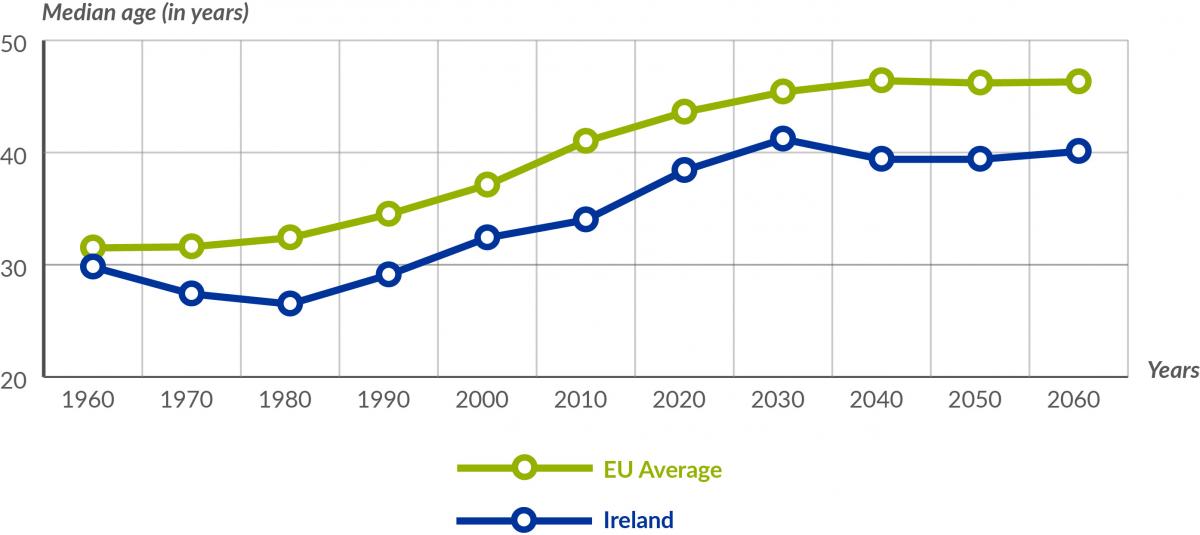Why is ageing of the workforce relevant for employers?
Ageing of the population in Europe
The population across the EU has been ageing over recent decades: a trend that is set to continue and intensify. The following graph shows that the
The age that divides a population into two numerically equal groups; that is, half the people are younger than this age and half are older. (Source)
has increased significantly over recent decades and is projected to continue rising.
The age that divides a population into two numerically equal groups; that is, half the people are younger than this age and half are older. (Source)
: EU average between 1960 and 2060
The ageing of the population goes hand-in-hand with the ageing of the workforce. Fewer young people are entering the labour market, while the proportion of older people (aged 55-64 years) in the workforce is growing.
Age composition of the working population (1990-2060)

Within Ireland the share of the population aged over 65 years was 13% compared to an EU average of 18% in 2013. The numbers of people working between 55 and 64 years has decreased since 2008, with 51% of this age group employed. Employment rates within the age group 65 years and older were 8.6% in 2012.
There are no fixed retirement ages within Ireland but those are set in the contract of employment. For workers in public service retirement ages have been raised to 66 years for those joining since 2014 and 68 years from 2028.
Discrimination on the basis of age has also been updated in 2016 via the Equality (Miscellaneous Provisions) Act 2015 where an employer can set a mandatory retirement age as long as it can be objectively justified.
Key challenges
The demographic changes described above bring key challenges to organisations, such as:
- Attracting young workers from a shrinking labour market;
- Retaining the growing proportion of experienced older workers;
- Adapting workplaces to ensure productivity; and
- Maintaining and upgrading the overall knowledge and skills base.
Benefits of an age-diverse workforce
Besides challenges, an age-diverse workforce also brings many benefits to the workplace, including:
- Age-diverse workforces help organisations to adapt to the requirements of an equally diverse customer base and varied customer needs;
- Workers of different ages and gender bring in diverse perspectives and talents;
- Diversity fosters creativity and innovation, facilitates problem solving and provides greater opportunities for knowledge-sharing between generations;
- Organisations with an age-diverse workforce are better able to respond to rapidly changing circumstances as they maximise their human resource potential; and
- Age diverse workforces improve overall organisational performance granting a greater ability to deal with varying roles and tasks.
Managing people from different generations at the workplace
More than ever before, workplaces comprise workers from different generations with their own experiences, perspectives, values and ideas and with varying needs and expectations. According to researchers in human behaviour, groups of people of a particular age develop certain common characteristics based on shared experiences.
Being aware of differences between generations and a better understanding of ageing and the changes it implies, will help managers to make the best use of the strength and potential of all generations. Moreover, it is equally important that managers show respect, recognition and appreciation towards all age groups.
In order to unlock the benefits of an age-diverse workforce, organisations need to take a proactive approach to managing age, which might also imply a change in human resource strategies. Organisations that don't appreciate the impact of an ageing workforce and the need to address the challenges, may be putting their productivity and competitiveness at risk.